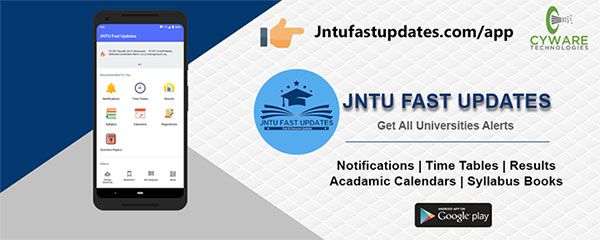JNTUK R16 3-2 Computer Graphics Material/Notes PDF Download
Students those who are studying JNTUK R16 Mechanical Branch, Can Download Unit wise R16 3-2 Computer Graphics Material/Notes PDFs below.

JNTUK R16 3-2 Computer Graphics Material/Notes PDF Download
OBJECTIVES:
- Understand the fundamental concepts and theory of computer graphics
- Understand modeling, and interactive control of 3D computer graphics applications
- The underlying parametric surface concepts be understood
- Learn multimedia authoring tools.
UNIT-1
INTRODUCTION: Application areas of computer graphics, overview of graphic system, video-display devices, raster-scan systems, random scan systems, graphics monitors and work stations and input devices.
UNIT-2
OUTPUT PRIMITIVES: Points and lines, line drawing algorithms, mid-point circle algorithm, Filled area primitives: scan-line polygon fill algorithm, boundary-fill and flood-fill algorithm. 2-D GEOMETRICAL TRANSFORMATIONS: Translation, scaling, rotation, reflection and shear transformation matrix representations and homogeneous co-ordinates, composite transformations, transformations between coordinates
UNIT-3
2-D VIEWING : The viewing pipe-line, viewing coordinat4 reference frame, window to view-port co-ordinate transformations, viewing function, Cohen-Sutherland and Cyrus-beck line clipping algorithms, SutherlandHodgeman polygon clipping algorithm
UNIT-4
3-D OBJECT REPRESENTATION: spline representation, Hermite curve, Bezier curve and B-spline curve, Polygon surfaces, quadric surfaces, , Solid modeling Schalars – wire frame, CSG, B-rep. Bezier and B-spline surfaces, Basic illumination models, shading algorithms
UNIT-5
3-D GEOMETRIC TRANSFORMATIONS: Translation, rotation, scaling, reflection and shear transformation and composite transformations. Visible surface detection methods: Classification, back-face detection, depthbuffer, scan-line, depth sorting
UNIT-6
COMPUTER ANIMATION: Design of animation sequence, general computer animation functions, raster animation, computer animation language, key frame system, motion specification
TEXT BOOKS:
- Computer Graphics C version/ Donald Hearn and M. Pauline Baker/Pearson/PHI
- Computer Graphics Principles & practice-second edition in C/ Foley, VanDam, Feiner and Hughes/Pearson Education
REFERENCE BOOKS:
- Computer Graphics Second edition/ Zhigand xiang, Roy Plastock, Schaum’s outlines/Tata Mc-Graw hill edition.
- Procedural elements for Computer Graphics/David F Rogers/Tata Mc Graw hill, 2nd edition.
- Principles of Interactive Computer Graphics/ Neuman and Sproul/TMH.
- Computer Graphics/ Steven Harrington/TMH
OUTCOMES:
- Use the principles and commonly used paradigms and techniques of computer graphics
- Write basic graphics application programs including animation
- Design programs to display graphic images to given specifications


320-x100(1).gif)
